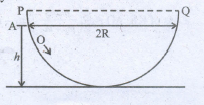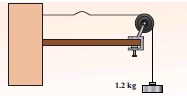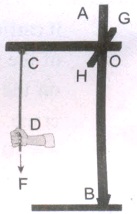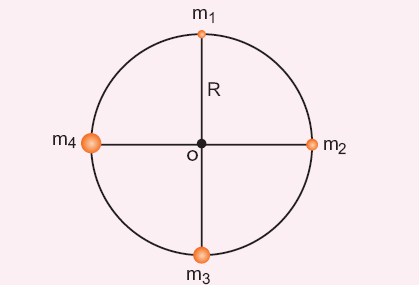- State Board
-
12th Standard
-

Biology
-

Computer Applications
-

Computer Science
-

Business Maths and Statistics
-

Commerce
-

Economics
-

Maths
-

Chemistry
-

Physics
-

Computer Technology
-

History
-

Accountancy
-

Tamil
-

Maths
-

Chemistry
-

Physics
-

Biology
-

Computer Science
-

Business Maths and Statistics
-

Economics
-

Commerce
-

Accountancy
-

History
-

Computer Applications
-

Computer Technology
-

English
12th Standard stateboard question papers & Study material
தமிழ் Subjects
English Subjects
-
-
11th Standard
-

Maths
-

Biology
-

உயிரியல் - தாவரவியல்
-

Economics
-

Physics
-

Chemistry
-

History
-

Business Maths and Statistics
-

Computer Science
-

Accountancy
-

Commerce
-

Computer Applications
-

Computer Technology
-

Tamil
-

Maths
-

Commerce
-

Economics
-

Biology
-

Business Maths and Statistics
-

Accountancy
-

Computer Science
-

Physics
-

Chemistry
-

Computer Applications
-

History
-

Computer Technology
-

Tamil
-

English
11th Standard stateboard question papers & Study material
தமிழ் Subjects
English Subjects
-
-
9th Standard
-

-

-

-

-

-

-

Maths
-

Science
-

Social Science
-

Maths
-

Science
-

Social Science
9th Standard stateboard question papers & Study material
தமிழ் Subjects
English Subjects
-
-
6th Standard
-

Maths
-

Science
-

Social Science
-

Maths
-

Science
-

Social Science
6th Standard stateboard question papers & Study material
தமிழ் Subjects
English Subjects
-
-
10th Standard
-

Maths
-

Science
-

Social Science
-

Tamil
-

Maths
-

Science
-

Social Science
-

English
-

English
10th Standard stateboard question papers & Study material
தமிழ் Subjects
English Subjects
-
-
7th Standard
-

Maths
-

Science
-

Maths
-

Science
-

Social Science
7th Standard stateboard question papers & Study material
தமிழ் Subjects
English Subjects
-
-
8th Standard
-

கணிதம் - old
-

Science
-

Social Science
-

கணிதம்
-

Maths
-

Science
-

Social Science
8th Standard stateboard question papers & Study material
தமிழ் Subjects
English Subjects
-
-
12th Standard
- CBSE Board
-
12th Standard CBSE
-

Biology
-

Physics
-

Chemistry
-

Maths
-

Accountancy
-

Introductory Micro and Macroeconomics
-

Business Studies
-

Economics
-

Computer Science
-

Geography
-

English
-

History
-

Indian Society
-

Physical Education
-

Sociology
-

Tamil
-

Bio Technology
-

Engineering Graphics
-

Entrepreneurship
-

Hindi Core
-

Hindi Elective
-

Home Science
-

Legal Studies
-

Political Science
-

Psychology
12th Standard CBSE Subject Question Paper & Study Material
-
-
11th Standard CBSE
-

Mathematics
-

Chemistry
-

Biology
-

Physics
-

Business Studies
-

Accountancy
-

Economics
-

Computer Science
-

Bio Technology
-

English
-

Enterprenership
-

Geography
-

Hindi
-

History
-

Home Science
-

Physical Education
-

Political Science
-

Psychology
-

Sociology
-

Applied Mathematics
11th Standard CBSE Subject Question Paper & Study Material
-
- 10th Standard CBSE
-
9th Standard CBSE
-

Mathematics
-

Social Science
-

Science
-

English
-

Hindi
9th Standard CBSE Subject Question Paper & Study Material
-
-
8th Standard CBSE
-

Science
-

Social Science
-

Mathematics
-

English
8th Standard CBSE Subject Question Paper & Study Material
-
-
7th Standard CBSE
-

Mathematics
-

Science
-

Social Science
-

English
7th Standard CBSE Subject Question Paper & Study Material
-
-
6th Standard CBSE
-

Mathematics
-

Science
-

Social Science
-

English
6th Standard CBSE Subject Question Paper & Study Material
-
-
12th Standard CBSE
- Free Online Test
- News
- Study Materials
-
Students
-

Stateboard Tamil Nadu
-

CBSE Board
-

Free Online Tests
-

Educational News
-

Scholarships
-

Entrance Exams India
-

Video Materials
Study Materials , News and Scholarships
-
-
Students
+1 First Revision Test Model
11th Standard
-
Reg.No. :
Physics
Time :
02:30:00 Hrs
Total Marks :
70
-
The velocity of a particle v at an instant t is given by v = at + br2. The dimensions of b is
(a)[L]
(b)[LT-1]
(c)[LT-2]
(d)[LT-3]
-
An object is dropped in an unknown planet from height 50 m, it reaches the ground in 2 s. The acceleration due to gravity in this unknown planet is
(a)g = 20 ms-2
(b)g = 25 ms-2
(c)g = 15 ms-2
(d)g = 30 ms-2
-
The slope of the position-time graph will give ______________.
(a)displacement
(b)velocity
(c)acceleration
(d)force
-
Two blocks of masses m and 2m are placed on a smooth horizontal surface as shown. In the first case only a force F1 is applied from the left. Later only a force F2 is applied from the right. If the force acting at the interface of the two blocks in the two cases is same, then F1 :F2 is
(a)1:1
(b)1:2
(c)2:1
(d)1:3
-
A body of mass 4 m is lying in xy-plane at rest. It suddenly explodes into three pieces. Two pieces each of mass m move perpendicular to each other with equal speed v. The total kinetic energy generated due to explosion is
(a)mv2
(b)\(\frac{3}{2}\)mv2
(c)2mv2
(d)4mv2
-
A disc of the moment of inertia Ia is rotating in a horizontal plane about its symmetry axis with a constant angular speed \(\omega\). Another disc initially at rest of moment of inertia Ib is dropped coaxially on to the rotating disc. Then, both the discs rotate with the same constant angular speed. The loss of kinetic energy due to friction in this process is,
(a)\(\frac { 1 }{ 2 } \frac { { I }_{ b }^{ 2 } }{ 2({ I }_{ a }+{ I }_{ b }) } { \omega }^{ 2 }\)
(b)\(\frac { { I }_{ b }^{ 2 } }{ ({ I }_{ a }+{ I }_{ b }) } { \omega }^{ 2 }\)
(c)\(\frac { { ({ I }_{ b }-{ I }_{ a }) }^{ 2 } }{ ({ I }_{ a }+{ I }_{ b }) } { \omega }^{ 2 }\)
(d)\(\frac { 1 }{ 2 } \frac { { { I }_{ b }{ I }_{ b } } }{ ({ I }_{ a }+{ I }_{ b }) } { \omega }^{ 2 }\)
-
Three identical metal balls, each of the radius r are placed touching each ether on a horizontal surface such that an equilateral triangle is formed when centres of three balls are joined. The centre of the mass of the system is located at _____________.
(a)line joining centres of any two balls
(b)centre of one of the balls
(c)horizontal surface
(d)point of intersection of the medians
-
The work done by Sun on Earth at any finite interval of time is
(a)Positive, negative or zero
(b)Strictly positive
(c)Strictly negative
(d)It is always zero
-
Which of the following is not a scalar?
(a)viscosity
(b)surface tension
(c)pressure
(d)stress
-
If there were no gravity, which of the following will not be there for a fluid?
(a)viscosity
(b)surface tension
(c)pressure
(d)archimedes upward thrust
-
An ideal refrigerator has a freezer at temperature −12°C. The coefficient of performance of the engine is 5. The temperature of the air (to which the heat ejected) is
(a)50°C
(b)45.2°C
(c)40.2°C
(d)37.5°C
-
Which of the following shows the correct relationship between the pressure and density of an ideal gas at constant temperature?
(a) (b)
(b) (c)
(c) (d)
(d)
-
An ideal spring of spring constant k, is suspended from the ceiling of a room and a block of mass M is fastened to its lower end. If the block is released when the spring is un-stretched, then the maximum extension in the spring is
(a)4\(\frac { Mg }{ k } \)
(b)\(\frac { Mg }{ k } \)
(c)2\(\frac { Mg }{ k } \)
(d)\(\frac { Mg }{ 2k } \)
-
Which of the following function represents a simple harmonic oscellation?
(a)sin ωt - cos ωt
(b)sin ωt + sin2 ωt
(c)sin ωt - sin2 ωt
(d)sin2 ωt
-
A sound wave whose frequency is 5000 Hz travels in air and then hits the water surface. The ratio of its wavelengths in water and air is
(a)4.30
(b)0.23
(c)5.30
(d)1.23
-
Name the instrument to measure Sub-atomic particles.
-
If the position vector of the particle is given by \(\vec { r } ={ 3t }^{ 2 }\hat { i } +5t\hat { j } +4\hat { k } \), Find the
(a) The velocity of the particle at t = 3 s
(b) Speed of the particle at t = 3 s
(c) Acceleration of the particle at time t = 3s -
A bob attached to the string oscillates back and forth. Resolve the forces acting on the bob into components. What is the acceleration experience by the bob at an angle ፀ.
-
A lighter body collides with much more massive body at rest. Prove that the direction of lighter body is reversed and massive body remains at rest.
-
Write the relation between angular momentum and rotational kinetic energy. Draw a graph for the same. For two objects of same angular momentum, compare the moment of inertia using the graph.
-
What is Reynold’s number? Give its significance.
-
What is a black body?
-
Explain damped oscillation. Give an example.
-
What is meant by reverberation time?
-
Give the values for the following units with prefixes.
(i) 1 Mega ohm
(ii) 1 milliampere
(iii) 1deca gram
(iv) 1nano second
(v) 1 micro volt
(vi) 1 centimetre -
Write down the kinematic equations for angular motion.
-
What is the meaning by 'pseudo force'?
-
A ball of mass m is pushed down the wall of hemispherical bowl from point A. It just rises up to edge Q of the bowl. Find the speed at which baU is pushed down.

-
Can a body be in equilibrium while in motion? If yes, give an example.
-
Determine gravitational potential from gravitational potential energy?
-
Discuss the limits of the specific heat of a gas
-
Explain how does a gas exert pressure on the bases of kinetic theory of gases.
-
Calculate the velocity of the travelling pulse as shown in the figure below. The linear mass density of pulse is 0.25 kg m-1. Further, compute the time taken by the travelling pulse to cover a distance of 30 cm on the string.

-
-
The force F acting on a body moving in a circular path depends on mass of the body (m), velocity (v) and radius (r) of the circular path. Obtain the expression for the force by dimensional analysis method. (Take the value of k = 1)
-
Derive the equation of motion, range and maximum height reached by the particle thrown at an oblique angle \(\theta\) with respect to the horizontal direction.
-
-
-
A body falling freely descends 0.3m in 0.1s and 0.398m in the next 0.1s in some other planet. Find the value of g in that planet.
-
An object of mass 10 kg moving with a speed of 15 ms-1 hits the wall and comes to rest within
(a) 0.03 second
(b) 10 second.
Calculate the impulse and average force acting on the object in both the cases.
-
-
-
Derive an expression for the velocity of the body moving in a vertical circle. And also find a tension at the bottom and the top of the circle.
-
State in the absence of any external force the velocity of the centre of mass remains constant.
-
-
-
Three mutually perpendicular beams AB, OC, GH are fixed to form a structure which is fixed to the ground firmly as shown in the Figure. One string is tied to the point C and its free end D is pulled with a force F. Find the magnitude and direction of the torque produced by the force,
(i) about the points D, C, O and B
(ii) about the axis CD, OC, AB and GH.

-
Consider four masses m1, m2, m3, and m4 arranged on the circumference of a circle as shown in figure below.

Calculate
(a) The gravitational potential energy of the system of 4 masses shown in figure.
(b) The gravitational potential at the point O due to all the 4 masses
-
-
-
Explain briefly about the graphical representation of Displacement, velocity and acceleration in SHM.
-
How does the wave y = sin(x − a) for a = 0, a =\(\frac { \pi }{ 4 } ,a=\frac { \pi }{ 2 } ,a=\frac { 3\pi }{ 2 } \) and a = \(\pi\) look like? Sketch this wave.
-
I. Choose the most suitable answer:
15 x 1 = 15
II. Answer any six questions. Q.No 18 is compulsory:
6 x 2 = 12
III. Answer any six questions. Q. No 33 is compulsory:
6 x 3 = 18
IV. Answer all in detail
7 x 5 = 35






 11th Standard Physics Syllabus
11th Standard Physics Syllabus  11th Standard Physics Study Materials
11th Standard Physics Study Materials 11th Standard Physics MCQ Practise Tests
11th Standard Physics MCQ Practise Tests 

Reviews & Comments about +1 Physics First Revision Test Model Question paper
Write your Comment